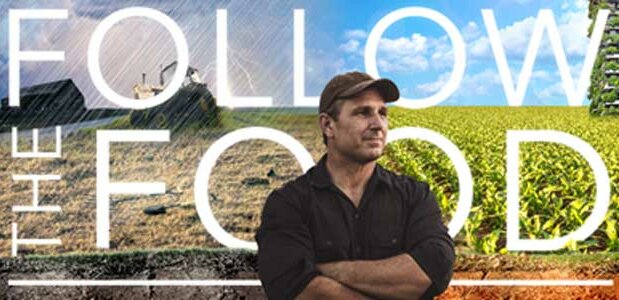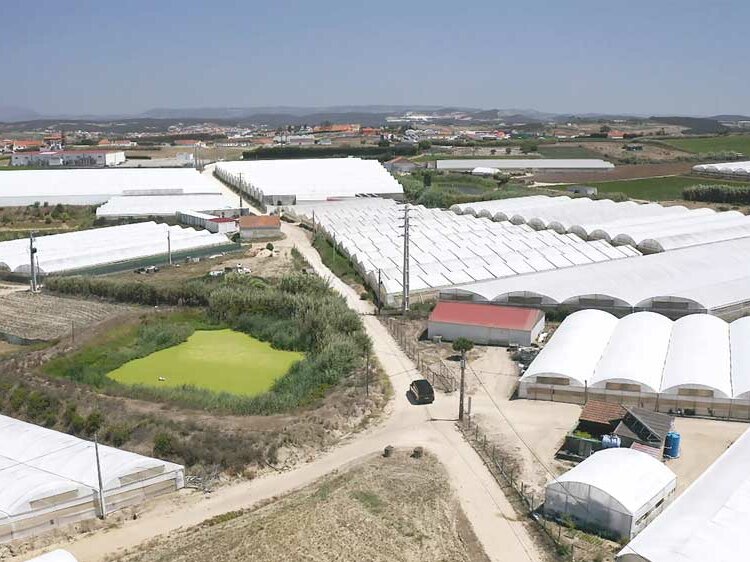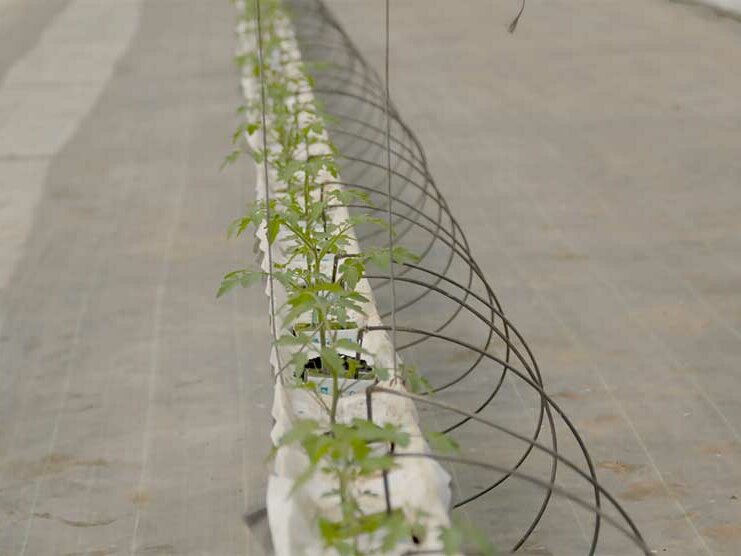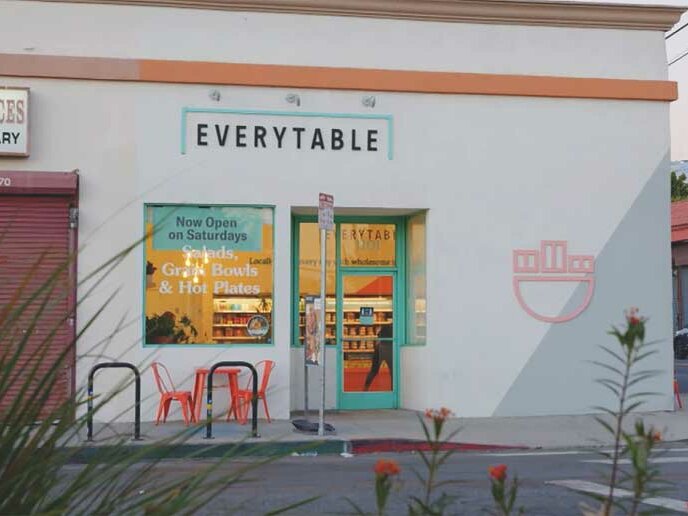Follow the Food - Can we achieve foodtopia?
By James Wong, BBC
The world's food system is enormous, complex and, in many ways, remarkable. But it's far from perfect. While we produce more food than ever before, there are inequities in distribution, disparities in quality and a toll taken on our environment and climate, but could now be the perfect time to rethink how we feed ourselves? If we could design a perfect food future, our foodtopia, what would it look like, and what would it take to create it?
In the first episode of the latest BBC World News and bbc.com series, Follow the Food, http://www.bbc.com/followthefood, renowned botanist, James Wong, is exploring how farmers, scientists and innovators are radically reimagining how we grow and produce our food in a quest to meet the greatest challenges that are facing humanity, and to create a new and better food future.
Chiara Cecchini, a Forbes “thirty under thirty” social entrepreneur and the CEO and cofounder of Future Food Institute, explains: “This is the first time we have to feed eight billion people on this planet. So whilst we’re trying to feed all of us, we’re also trying to understand how to use all the resources we have to do that. Where we struggle is with certain paradoxes, such as obesity versus hunger, food loss versus food waste and the lack of responsible procedures to treat our land. These are the challenges we’re trying to resolve right now.”
Harnessing artificial intelligence
Farmers around the world are trying new things to reduce, or even reverse, agriculture's impact on the environment and climate, but can we have plentiful food, despite the challenge of population growth? By 2050 there are expected to be almost ten billion mouths to feed, but agriculture already uses roughly half of all habitable land on the planet, so we'll need to grow more on less.
As one of the largest crop producers in the world, Brazil is increasingly embracing digital agriculture as a solution and Brazilian company, Solinftec, have gone so far as to combine data gathering with AI to create a virtual farming assistant called Alice. The idea is that farm, weather and market data can be analysed and offer suggestions to the farmer, meaning that they can be more precise and efficient than ever before.
“If you go to Brazil today, what we are seeing it is a revolution. In crops, for example, we've been seeing the area using digital ag more than tripling every year. The idea is simple: making more with less,” said Daniel Padrão, Chief Operating Officer at Solinftec.
“Some people compare Alice to Siri, but we prefer to think about Alice as your personal data scientist. With the challenges that we have for 2050 , we can't afford not to use fertiliser, crop protection and soil as efficiently as possible. So, using data to better understand agriculture and better understand how can we increase yields using less.”
Foodtopia
Tackling the inequities in our food system is an enormous job, and it demands a sea-change in societal attitudes, but the fact that people are looking for solutions is a positive start.
It's not just reassuring, but quite frankly, also inspirational to know that our footopia - a civilisation where nutritious, safe and affordable food is sustainably produced and available to all - is, at least in theory, entirely possible, and scientists and farmers are already working on the tools that we need to make that happen. All we need to do, as a society, is have the will to see that through.
To find out more or watch the episode in full, you can also visit http://www.bbc.com/followthefood and follow @BBCFuture on Facebook and Twitter for all the latestfrom the series.
Gene editing
People tend to make their food choices based on taste first and healthiness second, so it really doesn't matter what nutrients a crop contains if no one is going to eat it. It's a really important barrier to making a change and Dr. Tom Adams, CEO and Co-Founder of Pairwise in North Carolina, is using gene editing to address the problem.
“People talk about how they like to eat nutritious leaves like kale, but the amount of kale consumed in fresh salads is not much. So, one of the things that we saw is there are relatives of kale in the brassica family, which are just as nutritious as kale, but they actually have a leaf structure like lettuce. The problem is that they don’t taste very good, so we saw the opportunity to remove that pungency, using a relatively simple biochemical reaction, to be able to bring a new category of salads to the market and to the table,” said Dr. Tom Adams.
Dr. Tom Adams and his team at Pairwise are using a gene editing technology called Crisper to develop nutrient-rich ingredients that are more enticing and convenient for consumers, and therefore more likely to find their way into people’s shopping baskets. But it’s not just flavour they’re trying to alter.
He adds, “We have some beautiful blackberry plants, which are a really great tasting variety. But this variety has thorns on it, and that's one of the things we'd like to remove, as it’s a real problem with labour because you have to go slower when picking them and you can cut yourself on the thorns.”
However, gene editing is not without its critics, and its use outside the lab is prohibited in some parts of the world. But its supporters point to its advantages in speed and accuracy over traditional breeding techniques. Whilst gene editing isn't conventional breeding, it’s not conventional genetic modification where the cutting and pasting of genes across different species barriers takes place, it’s just turning on and off genes within the same part.
No-soil crops
Historically, we've grown crops in the geographical areas that best suit their needs. But the last few years has seen a boom in indoor farming. At one such farm, across twenty two hectares of land, two million kilos of tomatoes are produced each year and not one of the plants is in the ground.
They're trialling a system developed by a Spanish company, New Growing System (NGS), that does away with the growing medium altogether.
“It looks similar to the traditional system, but it's completely different. The first thing you can see is the plastic gutter with different layers inside. The plants in there have absolutely no soil, just their bare roots, which grow directly into water and that water is constantly flowing and recirculated,” said Guillermo Baquero, who is responsible for international business development at New Growing System (NGS).
“It’s an enclosed recirculating system, so that means we are irrigating by gravity, and then we are collecting the water and reusing it again. From that alone, we can get between 50-75% water savings. And, because we are injecting the fertilisers and the chemicals the crop needs into the water, we are also saving fertilisers. The other good thing here is that we do not use pesticides as we have no soil here. We also have double density, as the crops grow closer together than in a traditional system.”
The system can be used for salads and fruit and means that fresh foods, rich in micronutrients, can be grown densely, at scale, and on land that would ordinarily be unfarmble. And, vitally, because they're grown indoors, the environment is controllable, meaning that the crops can be grown and harvested all year round.
When you look at really intensive, modern agricultural systems, they can seem a world away from that bucolic, romantic idea of how we like our food to be produced. But, if we really care about the environment, we should also care about evidence. These systems are better at land use, reducing water use, reducing fertiliser, and reducing pollution. And the best thing about it is this exact same technology could be applied all over the world, in climates much harsher than this one, allowing us to produce abundant food in areas where nothing else could grow.
Food equality
It's been reported that, across the US alone, 19 million people live in areas called “food deserts”, where they rely on cheap fast food and convenience stores to feed themselves. The result is pervasive health problems and wider social issues. In Los Angeles, Everytable is targeting both food deserts and affluent areas with a radical version of fast food. They believe that they can provide a version of fast food that's nutritious, fresh, made from scratch and affordable to low income communities.
“Many people live in neighbourhoods where there's very limited fresh and healthy food. Also known as food deserts. But that doesn't mean that people don't want healthy, affordable food. Healthy food is a human right and should not be a luxury product,” said Clare Fox, Vice President of strategic food partnerships at Everytable.
“We know that affordable means different things to different communities, and so we price our menu according to the median income of the neighbourhood. So wherever you find us, you’re going to find the exact same menu, but in low-income, food desert neighbourhoods, meals are going to be priced $3-5 cheaper, so that it's truly accessible.
“We work directly with farmers and suppliers to bring in the best ingredients - local, fresh - while also keeping costs low, so that we can offer an affordable menu for all of our customers. We bring our food into the community through our stores, our vending machines, home delivery and partnerships for community groups. We envision, in the future, a food system and a society where everyone has access to nutritious and healthy food,” she added.






